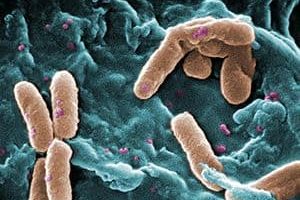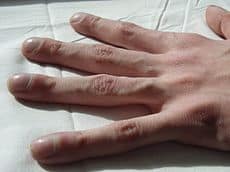cystic fibrosis
New indicator found for rapidly progressing form of deadly lung disease
ANN ARBOR, Mich. — A diagnosis of idiopathic pulmonary fibrosis is not much better than a death sentence, given a survival rate averaging 4 to 6 years as the disease robs its victim of the ability to breathe.
But researchers at the University of…
Notre Dame researcher helps discover ‘walking’ properties of bacteria
Talk about a walk on the wild side: University of Notre Dame researcher Joshua Shrout is co-author of a new paper that shows that bacteria are capable of “standing up” and moving while vertical.
Shrout, assistant professor of civil engineering an…
New techniques reveal workings of bacteria linked to cystic fibrosis
Researchers have identified a cell signaling system that may help the bacterium Pseudomonas aeruginosa establish itself in the lungs of cystic fibrosis patients. The researchers used a new technology to seek insights into an important and elusive enemy, and say the findings are important for biology and potentially important for therapy. The researchers identified the activation of this signaling system by the use of new quantitative proteomic technology that analyzed Pseudomonas samples from the lungs of children with cystic fibrosis. Proteomics is the method for analyzing and cataloguing a complete cellular complement of proteins, which are produced based on information encoded by genes and are the workhorses of all living cells.
Drug Fights Bacteria by Disrupting Quorum Sensing and Biofilms
Scientists have discovered a promising new drug lead that works by inhibiting the sophisticated bacterial communication system called quorum sensing. The new compound is active against Pseudomonas aeruginosa, the gram-negative infection that strikes — and usually kills — cystic fibrosis patients and many others whose immune systems are compromised. The bacteria, like many others that have been routinely treated by antibiotics, have developed strains that are antibiotic-resistant.
Screening technique may speed hunt for genes
The hunt to find a gene that causes a disease typically costs hundreds of thousands of dollars and requires years of research – and it still may fail to turn up the sought-after culprit, driving the research back to square one. The result is that while the genes involved in a few inherited diseases such as cystic fibrosis have been identified, many have not. Now, two scientists say they may have found a way to make the search more economical and speed it up. In an article to appear online in the Proceedings of the National Academy of Sciences next week, scientists from the University of Florida and Purdue University report merging two established genetic-screening techniques to create one that’s better. The new technique narrows the pool of “candidate” genes in a study from thousands of possibilities to fewer than 100 – perhaps as few as 20.



